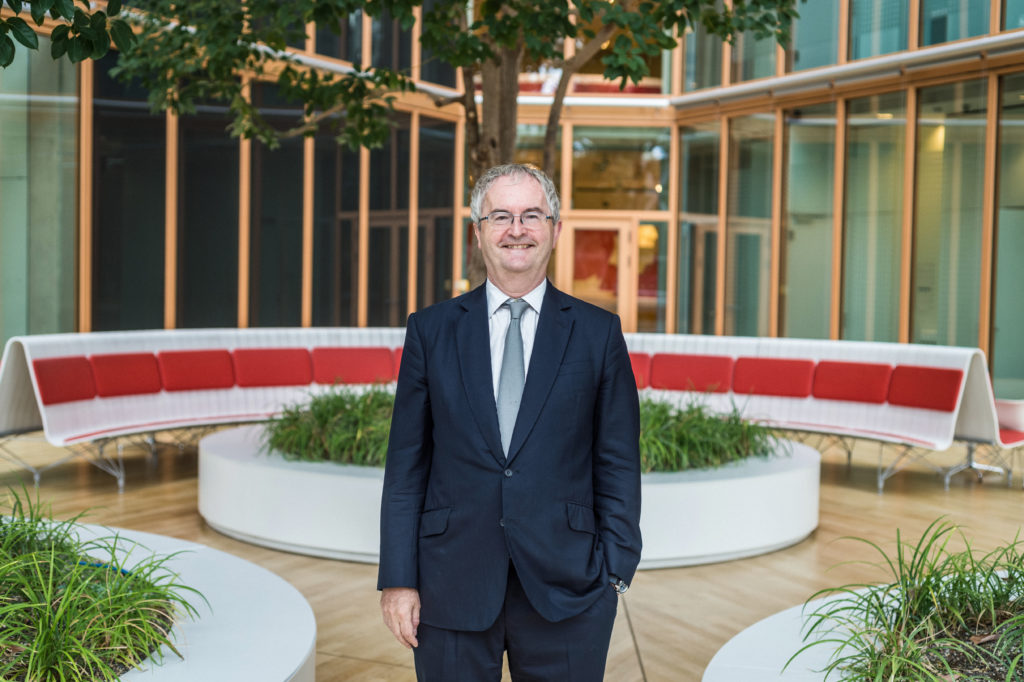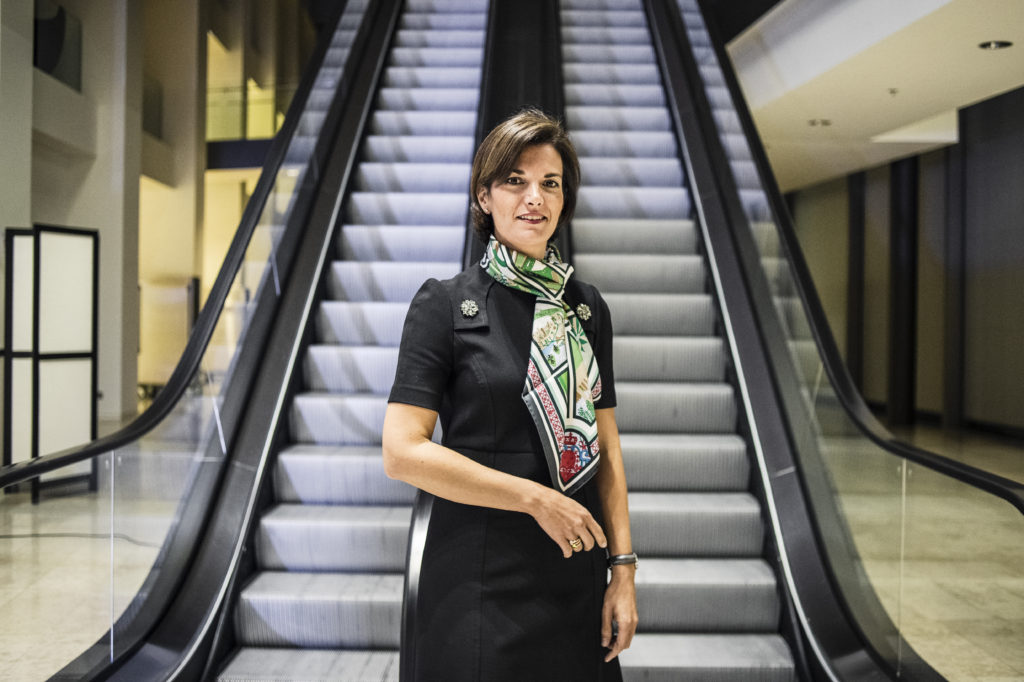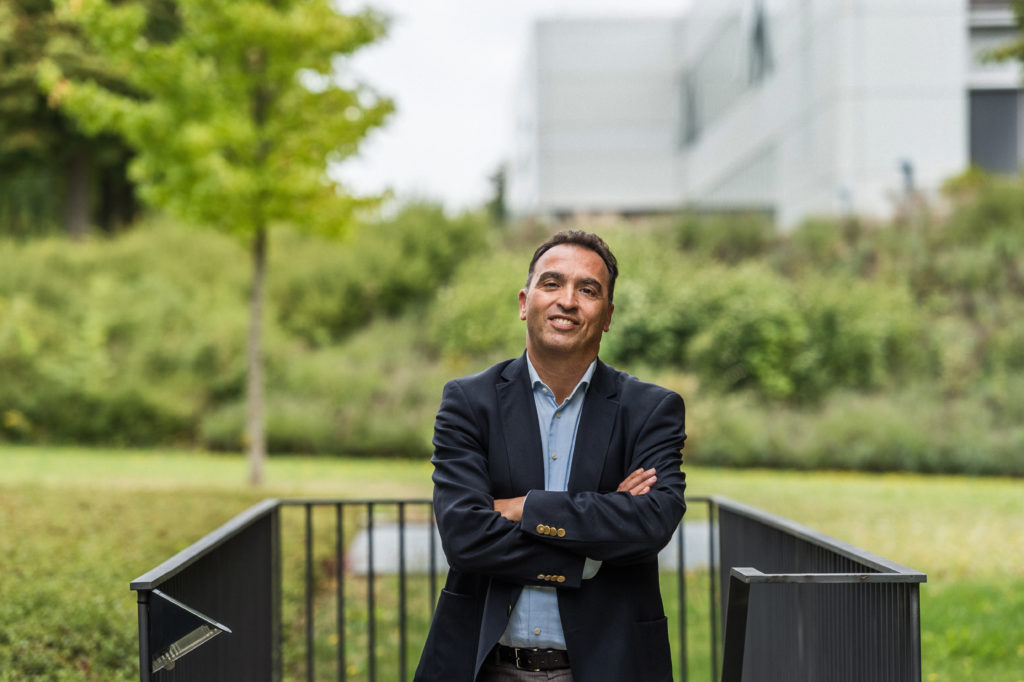In may 2018, the European Union proposed a broad action plan. On sustainable finance to support the transition to a low-carbon, more resource-efficient and sustainable economy. To achieve the 2030 targets agreed in Paris, including a 40% cut in Greenhouse gas emissions, the EU must fill an investment gap estimated at 180 billion EUR per year. The financial sector is expected to play a key role in reaching those goals.
SHOWING STRONG SUPPORT
As one of the leading financial centres for sustainable finance in the world, Luxembourg has warmly welcomed the ambitious EU action plan proposed earlier in the year.
“Luxembourg has been involved from the very beginning in this project and its representation in the various working groups has been material. I am therefore confident that Luxembourg will be among the first movers when it comes to the implementation of the regulation,” says Christian Hertz, Director at Luxembourg Investment Solutions. For more than a decade Mr Hertz has specialised as a lawyer in sustainable finance and has led the Association of the Luxembourg Fund Industry (“ALFI”) working group on sustainable investing.
The European Commission has set up a High-Level Expert Group (“HLEG”) and a Technical Expert Group (“TEG”) on Sustainable Finance, which are tasked with developing a unified classification system for sustainable economic activities, an EU green bond standard, methodologies for low-carbon indices, and metrics for climate-related disclosure.
Industry experts from the European Investment Bank (“EIB”), ALFI, and the Grand Duchy’s labelling agency LuxFLAG are working closely with the Commission on the different work streams. Moreover, Julie Becker, Member of the Executive Committee of Luxembourg Stock Exchange (LuxSE) was appointed Member of the HLEG on Sustainable Finance, whereas Jane Wilkinson, Head of Sustainable Finance at LuxSE, is a member of the TEG.
Since issuing the world’s first green bonds in 2007, the EIB’s Climate Awareness Bonds have raised more than 21 billion EUR. The EIB has had a single lending target, that 25% of all financing supports climate action. This has been met every year since the commitment was made in 2010.
“The plan includes the development of a green taxonomy that for the first time sets out a Europe-wide classification for green finance. This is a crucial step to attracting broader support from capital market investors, which is essential to fill the financing gap for low carbon projects. Investors need to better understand both climate and environmental risks, and we are already improving our own procedures to achieve this,” comments Jonathan Taylor, Vice-President at the EIB.

Investors need to better understand both climate and environmental risks, and we are already improving our own procedures to achieve this.

Jonathan Taylor, Vice-President, EIB
DEFINING WHAT’S ‘GREEN’
The EU aims to provide clarity on what sustainable investments are by creating a uniform, EU-wide classification system that gives businesses and investors a linguafranca to identify to what degree economic activities can be considered environmentally-sustainable. Currently there is no single market definition of ‘green’. This means that each borrower and investor develop their own criteria, which requires significant resources and leads to a risk of ‘green washing’ and loss of investor confidence through inconsistent green claims.
The EIB already shares experience that assists the technical expert group to better implement proposals for market classifications of climate change mitigation and the wider taxonomy for sustainable finance.
“Over the decades one lesson has been clear: that transparent standards and shared criteria for sustainability projects help to increase financial investment in this area. While the EIB has its own detailed standards and targets for climate, environment and social issues, we believe that a uniform European-wide definition will help capital market investors to increase their ambition and overall investment, including by corporates and municipalities. A European framework will help us both to target our financial support more efficiently and better measure impact over the longterm,” adds Taylor. According to Julie Becker, the first and most fundamental is the building of a common sustainability taxonomy. Without this backbone the success of the plan will be limited.

Julie Becker, Member of the Executive Committee of Luxembourg Stock Exchange (LuxSE)

Transparency is vital to the growth of sustainable finance.
“Transparency is vital to the growth of sustainable finance,” underlines Julie Becker. “Therefore, it will be extremely important to determine a broad common denominator. The work is complex and requires a step-by-step process leading towards an evolving regulation over time.”
At the same time, it’s important to ensure that with standardisation and transparency, enough room is left for innovation and technical advances to thrive. An energy-efficient car or building won’t be the same in five years. For this reason, Mrs Becker believes it will be important to maintain market innovation.
“The taxonomy will need to be dynamic and reviewed on a regular basis in order to reflect the changes in the economy and society.” One of the fundamental challenges of sustainable finance is that it boils down to ethics rather than finance. Investors’ choices are often driven by their own personal interests, rather than financial calculations.
“It’s not only about making sure the definitions are clear and understandable for all, but also about making sure that investors can access, at all times, the information they need to make their investment decisions. The Luxembourg Stock Exchange, via its Luxembourg Green Exchange platform, prides itself on being the leader in providing access to such information to international investors and building trust through clear communication about the different assets, activities and projects.”

It’s not only about making sure the definitions are clear and understandable for all, but also about making sure that investors can access, at all times, the information they need to make their investment decisions.
ENSURING THE RIGHT DISCLOSURES
The second proposed regulation by the EU obliges institutional investors and asset managers to disclose how they integrate environmental, social and governance (“ESG”) factors into their risk processes. This regulation will probably be the most important in terms of scope because it applies to almost all people in the asset management sector.
The disclosure proposal is composed of two sections: one that applies to all asset managers and one that only applies to niche players who are actually targeting specific sustainable investments. “The proposal is not the first one to do this, but what is new is that ESG will now become mandatory to all asset managers. The systematic need to conduct these checks will be a game changer for the industry. In my view it’s not a revolution, but it’s clearly a step further after the 2nd Shareholders Rights Directive (“SRD II”) which will be implemented in 2019. ESG considerations will now be systematically taken into account at all stages of the investment making and risk management process. While the mainstreaming was initially pushed by investors demand, we nowsee that policy makers start implementing the Paris agreement, which is the second big step in the ESG undertaking,” explains Hertz.
With regard to risk management, asset managers already have to take into account market risks, operational risks or reputational risks.
“If you invest in French or German government bonds, you are probably not looking at the sustainability risk. In the future, you will have to conduct the sustainability risk check on these government bonds, even if the ESG risk seems limited. If you were investing in oil or even in carmakers, you will certainly today already factor in the sustainability risks. Because both of them are identified as sensible industries. So, many asset managers are familiar with conducting sustainability risk checks.”
Commenting on the text of the proposal, Hertz believes the objective behind the EU package is well understood and very widely agreed upon by most asset managers and industry bodies. However, he also warns that the devil clearly lies in the details. “Thankfully these proposals are quite short. There are a number of inconsistencies and inaccuracies, but I’m confident that these proposals will be adjusted by the EU council and the EU parliament in a manner which will clarify the points. It’s likely to go in the right direction,” adds Mr Hertz. The proof of the pudding will be, inevitably, in the eating. The third proposed regulation by the EU Commission will create a new category of benchmarks comprising low-carbon and positive carbon impact benchmarks, which will provide investors with better information on the carbon footprint of their investments.
AMENDING EXISTING DIRECTIVES
The Commission has also been seeking feedback on amendments to delegated acts under the Markets in Financial Instruments Directive (“MiFID II”) and the Insurance Distribution Directive (IDD), to include ESG considerations into the advice that investment firms and insurance distributors offer to individual clients.
While the MiFID proposal is less developed when compared to the disclosure obligations, this is where the taxonomy and uniform standardised labelling will come in handy. Bankers and insurers will be required to act in the best interests of the investors, having their sustainability preferences front of mind. Investors will need proof of their ESG strategy and as a result will want the assets they buy to meet a certain standard.
“All this will lead to an enhanced demand of SRI products and, at the end of the day, will also strengthen the need of having labels. The advantage of having a label is, at least when it comes to the green-tech market, that it is easy to understand,” says Mario Mantrisi, General Manager at LuxFLAG.

Mario Mantrisi, General Manager, LuxFLAG

The advantage of having a label is, at least when it comes to the green-tech market, that it is easy to understand.
USING GREEN LABELS
One of the other areas of interest in the EU action plan for Luxembourg’s financial sector is that of fund labels. As soon as the taxonomy becomes clearer in 2019, the Commission will create “EU Ecolabels” for financial products and will explore possible measures to incorporate climate and environmental risks into prudential requirements in line with the EU taxonomy. Luxembourg’s labelling agency LuxFLAG already has a wide range of labels addressing investment funds and bonds, making it the leader in the cross-border sustainable finance labelling landscape.
“LuxFLAG started with a microfinance label. This was a first for the industry at that time. Today, we are the leader and have approximately 50% of the worldwide AuM in microfinance funds labelled by LuxFLAG. We are well-known for our rigorous process,” says Mantrisi.

Today, we are the leader and have approximately 50% of the worldwide AuM in microfinance funds labelled by LuxFLAG.
“The common green taxonomy will be very important for an actor like LuxFLAG, especially in view of the future eco-labels.”
The number of countries with fund labelling agencies in Europe is currently limited to Luxembourg, France, Germany, Austria and Sweden. Given its broad cross-border reach, LuxFLAG could therefore further strengthen its position as key labelling player in light of upcoming EU label propositions.
“The collaboration with the EU Commission and the other labelling agencies is on good terms. We are very conscious about the fact that at the end of the day we will need to find a consensus and define together the criteria of sustainability labels in the future,” adds Mantrisi.
Luxembourg has put an entire ecosystem of expertise in place, focused on providing financing to the underserved in developing countries through microloans and other financial products. “It’s the eco-system in particular that determines the strength of the Luxembourg financial centre. Even if a Danish asset manager is based in London instead of Luxembourg, he will turn to us for his labels because he knows he can trust the quality standards of LuxFLAG,” stresses Mantrisi.
LuxFLAG is a public-private initiative. “What differentiates us from other labelling agencies is that we are independent. We can afford to go for the highest quality standards only. To put it bluntly, we are not obliged to give a label to someone because of money.” The first EU label is expected to be a climate finance label. Depending on the criteria proposed by the EU, LuxFLAG will keep its existing labels, create a new one with the EU label criteria, or change the LuxFLAG into the EU label.
“It’s too early to tell how the labels will be harmonised. However, our clients do not need to worry. Our existing LuxFLAG labels will definitely be compatible with these from the EU. Considering the high quality of our criteria, we are convinced that there won’t be any surprises,” concludes Mario Mantrisi
THINKING BEYOND THE EU
Although the EU is set to lead the way and strengthen its position as frontrunner in the area of sustainable finance – taking bold steps that have consequences across an entire bloc of countries – it should be noted that some countries such as China have already put a taxonomy in place. “Wherever possible we work closely with other financial institutions, including multilateral and national promotional banks to align our approaches. One example of successful cooperation is a joint white paper with the China Green Finance Committee. This compared international green bond standards and identified taxonomies to improve comparability of disclosure and reporting. We do have a broad range of policy goals, not only in relation to sustainability. Achieving these requires a significant coordination effort across the Bank,” adds Jonathan Taylor.

Wherever possible we work closely with other financial institutions, including multilateral and national promotional banks to align our approaches.
Moreover, the Exchange solidified its relationship with China, which is the largest green bond issuer globally. China needs to access the international investor community for around 50% of its funding of green bonds and so requires innovative global partnerships. Therefore, Luxembourg and China decided to build bridges through the launch of the Green Bond Index Series and Green Bond Channel.
“The comparability is crucial, not only within the EU but also with other countries. That’s why we need to talk the same language, even if standards may differ at an international level. Otherwise the lack of consistent standards and information disclosure requirements will remain a barrier to cross-border green capital flows. In order for green assets to thrive, there needs to be a solid market framework and greater transparency. At the Luxembourg Green Exchange we work hard to provide the answers to this need,” concludes Julie Becker.



